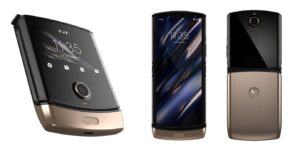One of the most interesting topics we are facing in the coming years in the mobile industry is the eSIM – the next generation of the common SIM Cards we all have in our smartphones. Over time, eSIM will become more and more widespread and have the potential to revolutionize the cellular world in the upcoming years. This article explains how eSIM technology works, what are the advantages for stakeholders and gives an overview of main market players and potential new applications.
eSIM, or “Embedded SIM”, refers to a pre-integrated SIM card that is soldered into a mobile phone. This silicon chip provides a secure vault for storing mobile subscription details into a secure and trustful digital format. An eSIM occupies 60 times less volume than a nano-SIM and can be embedded and fastened into any consumer mobile device, such as a smartphone, smartwatch, connected PC, or tablet.
The advantages of eSIM
eSIMs come with several advantages over removable SIM cards, explains Nicolas Chalvin, Vice-President Marketing Connectivity & Embedded Solutions at Thales Group, an eSIM solution provider. “For example, eSIM enhances the overall customer experience thanks to the digitalization of the mobile subscription onboarding process, as users benefit from all the advantages of a classic SIM card, but without having to wait to receive it by mail or having to go to a store to buy one. Having the possibility to remotely select and upload a mobile subscription of a Telecom Operator in the eSIM enables you to make full usage of the capabilities of your phone, such as calls, SMS, MMS and data, with a feeling of freedom while offering the same level of security as a physical SIM. This freedom is what makes eSIM part of the digitization strategy of telecom operators.”

But there are more advantages: for example, eSIM reduces the surface used inside the device, thus reducing the costs for device manufacturers and allowing them to use the space for other functionality. In the M2M domain, which requires soldering the SIM card for technical reasons such as vibrations and prohibiting the possibility of removing the SIM, the eSIM provides flexibility and the reduction of the number of required stock- keeping units (SKU).
Finally, eSIM lowers the logistic complexity of Telecom Operators by reducing physical SIM stock management. It brings them more simplicity, as eSIMs avoid manipulation of physical SIM and provide device subscriptions instantaneously. “Overall, eSIM remote provisioning will contribute to fully digitize Telecom Operators distribution channels, enabling a better customer experience and reducing commercial operating expenses, such as shops and logistics”, adds Chalvin.
The origin of eSIMs, standardization and consumer-market availability
With the aid of new Machine to Machine-Industrial (M2M) solutions that required more robustness, reliability and a longer lifespan, embedding SIM cards into a device became a necessity. However, soldering a SIM into a device raised the question of how to manage the various Mobile Operators subscriptions that this SIM would have to store. In 2010, the Global System for Mobile Communications industry body (GSMA) decided to tackle this challenge, with a specification that defines what an eSIM is and how to remotely provision one with subscription profiles in an M2M context.
Since then, eSIMs and Remote SIM Provisioning (RSP) solutions for M2M have been widely adopted, especially by the automotive industry. In the consumer market, device manufacturers started to embrace eSIM for the potential value it could bring to new devices such as wearables and connected ultra-mobile laptops and tablets. Upon GSMA announcing consumer initiative in 2015, the first eSIM-equipped consumer devices were released but with limited impact on the market due to the relative share of wearables and connected PCs in the cellular space.
However, this changed suddenly in September 2018 when Apple announced to deliver its new iPhone line-up with built-in eSIMs open to any qualified mobile network operator (MNO), except China. Other manufacturers followed suit: Google in December 2018 with Pixel 3, Motorola in 2019 with the “Razr V4 fold”, Samsung with their flagship S20 and Huawei with the P40/P40 Pro. With the arrival of the largest Original Equipment Manufacturers (OEMs) offering eSIM enabled smartphones, more than 2000 mobile operators offering eSIM services to their customers and covering more than 50 countries in almost all regions of the world, eSIM changed the consumer market forever. eSIM is now also a global GSMA specification, enabling remote SIM provisioning of any mobile device.

eSIM ecosystem overview
Three main actors that make up the eSIM ecosystem:
- eSIM Solutions providers that include eSIM hardware components, eSIM subscription profiles and remote subscription profiles provided to mobile operators.
- Device manufacturers/OEMs that have to embed eSIM in their devices. These are smartphone makers (Apple, Google, Motorola, Samsung, Huawei, Rakuten, Meizu), smartwatches makers (Apple, Samsung, Oppo, Xiaomi) and manufacturers of Tablets or Connected PC (Asus, Huawei, Microsoft Lenovo, Acer).
- Mobile Operators or CSPs (Communication Service Providers), who will deploy the RSP server in their infrastructure to remotely address eSIMs and load a subscription. RSP server which will therefore be provisioned with eSIM Subscription profiles.
“Some players, like Thales, can supply all the elements and others only certain bricks. Thales eSIM hardware products have been selected by several device makers in North America and Asia for wearables and smartphones and Thales servers equip the majority of the market. Because the eSIM is based on specifications issued by the GSMA, all the bricks of different suppliers are interoperable. There’s a growing trend in both the number of OEMs integrating eSIM and the number of devices equipped with eSIM and analysts predict 3.5 billion eSIM-enabled devices worldwide by 2024 for both consumer and M2M globally”, adds Chalvin.
eSIM market trends
Currently, the market is entering into a new phase with the acceleration of eSIM adoption by more smartphone manufacturers. “We see an increasing level of demand from OEMs who want to launch new smartphones, improve the capabilities of existing ones, or add eSIM support to wearables. This also applies to China with the notable exception of smartphones since local regulations do not allow them for the moment, although this should be resolved by the end of 2021.”
According to Thales’ market analysis, smartphones will represent more than 90% of the eSIM enabled consumer devices by 2024. Chalvin considers this change in the consumer market to be very important as reaching the critical mass of eSIM-enabled consumer devices will entice MNOs into increasing their efforts for transforming their business operations and leveraging their acquired eSIM solutions, he explains: “Being able to digitize the customer journey for many types of consumer devices including wearables, ACPCs (Always Connected PCs), and now smartphones will enable MNOs to increase their connectivity revenue.”
Compared to consumer solutions, the IoT/M2M market shows a different dynamic: the automotive sector remains by far the most active segment, but has slightly slower growth than that of consumers to date. Other M2M verticals that adopt eSIM are smart metering, tracking and traceability, smart cities, and retail/point of sale solutions. These are all examples of IoT, which is expected to have a key role in the massification of the use of eSIM.
A new age of contactless experiences and remote digital services
When asked if the current Covid-19 has changed current eSIM projects and activities, Chalvin answers that it has accelerated certain processes that were already put into practice. For example, many have acknowledged the need to go even further with the digitization of the distribution of mobile telephone subscriptions, which Chalvin thinks is in favor of eSIM: “Some Telecom Operators wish to reduce the number of stores or close them permanently, for which eSIM could be an alternative solution. While it is obvious that eSIM Solutions are part of a digital journey to obtain a mobile subscription, we also need digital enrolment and authentication or digital payment methods. These are digital bricks that Thales knows how to provide its customers.”
Chalvin adds that Covid-19 has also stressed the importance of contactless experiences and remote digital services: “The digital transformation of our societies, that started before this challenging context, has simply accelerated as digital solutions can tackle new stakes, such as paying contactless or signing a contract using a secure digital signature. We are now entering a “new normal” where digital security is mandatory and contactless experiences and remote digital services are privileged. The good news is that at Thales we are already on track to support this acceleration, making sure we can all trust this new world.”



